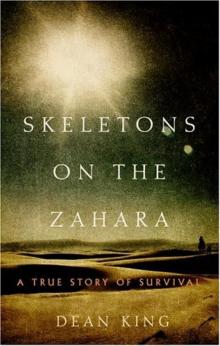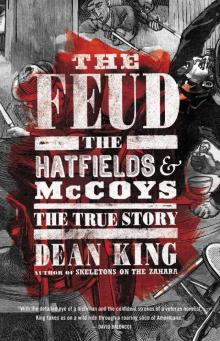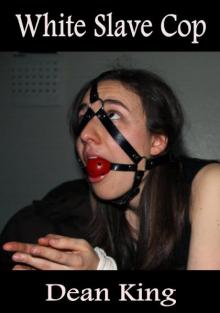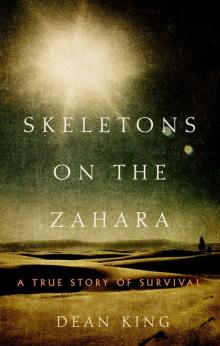The Feud: The Hatfields and McCoys: The True Story Read online
Page 17
WHEN TOM CHAMBERS, the wrong man, was mistakenly arrested, the prestigious Pikeville law firm of Auxier, Ferrell, and Connolly was retained to defend him. The same firm would also take up the rest of the cases as they came in. Anticipating trouble, Wall Hatfield, who had been reelected to serve as a justice of the peace through the end of 1888, had engaged the legal services of Perry Cline even before Jeff McCoy was killed. “Cline felt bound in honor to stand by Wall, even after Jeff was killed,” wrote Spears at the time. “So those now in prison have the best mountain talent to defend them.”
Then came a bizarre twist. On December 22, Pike County attorney A. J. Auxier signed an affidavit claiming that as counsel for three of the men being held for the murder of the McCoy brothers, he had received $225 from the accused Hatfields to be paid to Perry Cline in exchange for his efforts to get Governor Buckner to repeal the rewards offered for their capture. Auxier was a former district attorney and U.S. marshal for the District of Kentucky, and his claim carried great weight. Word went around that Cline had in fact persuaded Governor Buckner to offer larger rewards for the Hatfields’ capture just so that he could extort money from them, agreeing for a price to use his influence to have the rewards reduced or rescinded. (By one account, the Hatfields had promised Cline to stay out of Kentucky as part of the deal.) Cline claimed the $225 was only reimbursement for some effort on the Hatfields’ behalf. Johnse countered with a sworn statement before a notary public that “Cline had not spent any such sum of money in the manner stated by him, but that it was only an excuse for him to take shelter behind.”15
Presented with this evidence, Governor Wilson had further reason for inaction. Was Cline attempting to extort money from the Hatfields? Or was this an elaborate ruse concocted by the Hatfields and their paid minions? Although we may never know the answer, it would be Auxier’s name and reputation that were later sullied in a salacious public scandal, not Cline’s.
IN HIS YEAR-END ADDRESS TO the legislature, Governor Buckner condemned the lawlessness and violence in Kentucky’s eastern mountains, which, he declared, were tainting the state’s reputation. Referring to the murder of the McCoy brothers, he declared, “If, from neglect or inefficiency, we fail to repress this lawlessness, or to bring the offenders to justice, we have no right to complain of the false estimation in which we are held by the people of other states.” It was a veritable call to arms.16
Devil Anse was marshaling his forces. Fiercely concerned about Frank Phillips, he called a meeting of his clan. Even the Hatfield family was not monolithic. The various members differed in ambition, temper, and willpower, and given the rising level of violence and increasing threat of seizure, some no longer had a taste for the fighting. Because of a bitter dispute with Elias over a parcel of timberland, Crazy Jim had withdrawn from family matters for a time and had not participated in the retaliation against the McCoy brothers. Though at fifty-six he was seven years Devil Anse’s senior, the whiskered and muscular six-foot Witcher roughrider was still a formidable figure. Since the war, he had occupied himself with cutting timber and hauling it to Catlettsburg and running a store on Thacker Creek.
But now he was back in the fold and feeling obliged to cooperate, thanks to a good turn Devil Anse had done him. In the summer, Crazy Jim had brought back a mistress from Pike County to his cabin on Thacker Creek. His wife, Mary, objected but was unable to prevent Jim from moving her in. Somehow he managed to make the situation—living with Mary, the mistress, and the children in a one-room cabin—tenable. However, when he was away, Mary and the couple’s oldest son, Jim Jr., made sure that the new woman did not live at ease. Eventually, she refused to stay. Crazy Jim tried to move her in with his son John, who also lived on Thacker Creek, but he and his wife rejected the idea. Finally, Devil Anse agreed to take the woman in. She was still there, and Crazy Jim felt inclined to participate in family matters because of it.17
Devil Anse, Elias, Crazy Jim, and a number of others met at Crazy Jim’s on an unseasonably warm and sunny Christmas Day. They sat outside on stumps to discuss their options. When it came to clan decisions, Elias’s opinions ranked up with Devil Anse’s. And while responsibility for the Hatfields’ actions has almost always been heaped on Devil Anse’s shoulders, here at this critical juncture, it was Elias, who had been indicted for the murder of the McCoy brothers even though he had not taken part in them, who saw no solution other than a preemptive strike on Old Randall. Elias had previously worried that the McCoys were plotting to kidnap him or his son Henry. Now he declared that they were watching his property, looking for an opportunity to shoot him. He claimed that on the hillside above his house there was a brushed sniper’s perch with a forked sapling to steady a rifle. He also pointed out that Cal McCoy had a new .38 -caliber Winchester, a deadly weapon perfect for the crime.18
Devil Anse was against the idea of an attack, according to his grandson Coleman. He doubted Elias’s contention that it was a sniper and not a hunter who had set up a stand above his house, and he wanted to let things ride, to continue to hold out and hope that time and the expanding economy would soon make all well again. Others agreed that five years after the murders of Ellison and the brothers, they should continue to bide their time in the hopes that eventually everyone would decide to simply move on.
For Cotton Top Mounts, who would be a key player in what was about to unfold, it was a time of secrecy and confusion. He was on the go for days at a time. He had been at his mother’s house on Sand Lick Fork of the Guyandotte River when Johnse and Guerilla Mitchell came looking for him. They told him that Cap had sent for him and that “the Kentucky authorities had rewarded me $500,” as Cotton Top later recounted, meaning that they had put a price on his head, “and that I must stand in or I would get captured and killed.” He obediently left with them. They rode over to Island Creek and met up with Devil Anse, his sons Cap and Bob, and Charley Gillespie at the home of a neighbor, where they spent the night. They set out the next day and stayed the night with a Vance relative, going to Henderson and Matilda Varney’s at the head of Mate Creek the following day for their noon meal. Then they moved to Floyd Hatfield’s place and from there went to stay with Wall’s son Eph. On Friday, December 30, they met with Crazy Jim, who, Cotton Top said, had a hushed conversation with Devil Anse, Cap, and Johnse and then rode off. On Saturday, they went to the property of another Hatfield relative and stayed in a shack. Wall and the three Mahon brothers showed up, and more secretive discussions ensued. Next, they went to Crazy Jim’s. After further meetings, Cotton Top said, they “called me to them and said some of the parties on the Kentucky side had me rewarded and some of them on the Kentucky side must be killed in order to stop the prosecution of us on that side.” They told him he was going to help.19
“Anse Hatfield started with us to the McCoy house, but backed down,” said Cotton Top later in one of his several confessions. “He said it was absolutely unnecessary to kill old Randall McCoy and his family.” Nonetheless, according to Cotton Top, Devil Anse offered him his “big gun,” but Cotton Top told him he did not want it and that if he went, he’d take his own gun. “After we left,” said Cotton Top, “Anse went to Evans Ferrell on Thacker’s Creek and insisted that Ferrell go coon hunting with him so that he could prove an alibi if necessary.”20
If Devil Anse objected to the attack, he was countered by an unlikely ally of Elias. When it came to slinging a Colt, Crazy Jim was among the fastest around. Eager to put an end to the feud once and for all, he declared that he would lead the raid.
Despite what Cotton Top said in his confession, Cap’s son Coleman later claimed that Devil Anse came around and helped draw up a plan: “Anse believed that action later called a ‘peremptory strike’ was needed, just as it was when he and Randall McCoy killed General Bill France [sic] during the War Between the States,” Coleman wrote. “This meant that secrecy was needed, which limited the number of men who were sent.”21
Those involved chose the cusp of the new year on which to strike. S
omehow, Dave Stratton, who now associated with Harmon McCoy’s sons Lark and Bud, got wind of the plot. There was still time for the McCoys to assemble a force strong enough to repel the Hatfields, and Stratton told Bud and Big Jim that they should go to Randall’s house and stay there, that the Hatfields were planning a raid. Several days before it actually happened, Squirrel Huntin’ Sam, who had also heard of the plot, further warned family members. But the McCoys reacted without urgency.22
The McCoys had let their guard down at the wrong time. Of all the acts of egregious violence in Appalachia in the last two decades of the nineteenth century, what was to come next would prove to be the most notorious.
PART III
THE JANUARY
RAIDS AND THEIR
AFTERMATH
1887–1888
Chapter 14
A House Burning
December 31, 1887–January 2, 1888
On New Year’s Eve, a winter storm blanketed much of the mid-Appalachian region and surrounding areas in snow. In Washington, DC, the change in weather at first meant a glorious opportunity: society ladies and gentlemen parading in their high boots and sealskin coats, sleighs and cutters decked with jingling bells plying the avenue between the Treasury and the Capitol grounds, the sounds of revelry floating across the city, an impromptu outdoor celebration of the end of one year and the beginning of the next. Then, at around four thirty in the afternoon, the snow gave way to a bitter hailstorm. Suddenly the fun and frolicking turned to danger and panic. Horse-drawn carriages and omnibuses skidded out of control. Streetcars ground to a halt, stranding passengers and blocking traffic from the White House to Capitol Hill. Pedestrians and horses fell painfully on the glassy pavement. “For full three hours there was a surging, shivering, freezing mass of people, practically snow and ice bound,” reported one journalist. Four hours after the hailstorm started, the sky cleared and a bright full moon illuminated a town frozen in place.1
It was also a bright and bitterly cold evening on the banks of the Tug River, not an ideal night for an operation requiring stealth. But Crazy Jim and Cap, who were leading the raid, were the most volatile and violent of the Hatfields and men of action; adverse conditions were simply things to overcome, not things to derail a mission. The raiding party trekked on foot from Mate Creek to Blackberry Fork. Devil Anse was not with them; some said that he was ill, others that he was hunting. Crazy Jim led the way.2
A resourceful, hardworking breed, the Vances—who were avid singers of religious songs, skillful storytellers, and eager quaffers of moonshine—had long been quick to defend themselves with weapons of all makes. “The Vance family had a good side and a bad side to them,” wrote Helen Vance Anderson in her memoir, “and believe me, I’d rather be on the good side.” She acknowledged that the feud made the Vances and Hatfields look altogether bad. However, she argued, “this wasn’t true, because both sides of the families were very friendly and very kind to anyone who treated them with respect.” But the man or woman who did not had better beware. “My dad,” said Vance, “taught us that we should do no harm to anyone but if they did a wrong to you, don’t turn the other cheek but fight for all you’re worth.”3
Vance’s raiding party snuck up the hillside outside Randall and Sally’s house. A rail fence marked the uphill side of the property. One of the men stumbled against it, and the whole fence avalanched down the slope, rail upon rail. Figuring that the racket had alerted the McCoys, the Hatfields melted back into the forest before they could be discovered.4
The next day, Sunday, January 1, 1888, it was clear and cold again. Crazy Jim insisted that they return that night. Cap rode over to find Charley Gillespie, a dark-haired teenager from Tazewell County, Virginia. “Charley, we’re going over into Kentucky tonight to have some fun,” he told him. “Get a horse and meet us and go along.” Gillespie, who worked on one of Devil Anse’s timber crews, replied that he would be there and went out and “after a little trouble,” as he put it, managed to borrow a horse.5
When Gillespie reached the rendezvous point, he saw eight others. In addition to Crazy Jim, Devil Anse’s three oldest sons—Johnse, Cap, and Bob—were there, as well as four of his nephews: Ellison’s oldest son, twenty-year-old Indian; Ellison’s illegitimate son, Cotton Top; Guerilla Mitchell, the son-in-law of Devil Anse’s sister Matilda; and French Ellis. At thirty, Ellis was one of the more senior men along and, like Gillespie, one of Anse’s timber hands; his twenty-two-year-old wife, Eska, was a sister of Cap’s wife, Nan, both being daughters of Devil Anse’s sister Emma. “As unprepossessing, unhung a villain as I have ever had the misfortune to see,” was how the journalist T. C. Crawford later described Ellis, with “a small bull head, frosty complexion, washed-out eyes, little pug nose, and great sandy mustache lining the cruel, tightly-nipped mouth.”6
According to Gillespie, “It was agreed at the start, before the real object of the trip was disclosed, that all should yield to everything [Jim Vance] said and do all he might order us to do.” Some claim that Crazy Jim vowed, “May hell be my heaven, I will kill the man that goes back on me tonight, if powder will burn.”7
Once they were across the Tug, Gillespie later reported, Crazy Jim told them that “if old Randall McCoy and his son ‘Cal’ were out of the road, every material witness against the men who had taken part in the murder of the three McCoy boys would be removed, and there could be no conviction of any of them.”8 The men were tired of having to be on guard all the time. They wanted to sleep at ease at home, not in the woods with their Winchesters. With logic hard for us to reconcile, they believed that more murders would bring them the peace they sought.
According to Cotton Top, some of the raiders were on foot, at least at first, and took off their boots before they crossed the Tug. On their mounts, they traveled up Pound Mill Branch, over to Peter Fork of Blackberry Creek, and then up Blackberry Creek, which they followed to Jerry Hatfield’s. Cotton Top said that Crazy Jim and Cap and Johnse put on a disguise, which he called “fake faces.”9
IT WAS AROUND TEN THIRTY on New Year’s night when the men arrived at the McCoys’. The family had already turned in for the night. Their cabin was actually two buildings connected by a covered passage, all under a single roof. The Hatfields called the main building the big house, and the smaller building the kitchen. Snow clung to the trees and covered the roof of the cabin. Crazy Jim directed Mitchell, Gillespie, and Ellis to the lower door of the big house. According to Cotton Top, he told them not to let any men come out in women’s clothing.
Crazy Jim told Indian and Bob to cover the lower door of the kitchen, and Cap and Cotton Top the upper door. He and Johnse would take the main door of the big house.10
The McCoys’ watchdog started barking. Sensing something awry, Randall and his tall, handsome son Cal, who was twenty-five but still living at home, rose and hastily prepared to defend the family. The previous week, Cal had made a speech in school on the topic of good government, which his schoolmaster, Ambros Goosling, gave high praise. The school only went up to eighth grade, but Cal still attended when he could and often borrowed books from Goosling, who called him one of the most promising young men in the county, “a faithful Bible student and the essence of energy and purity.”11
Randall, Sally, Cal, and Tolbert’s orphaned son, Mel, were all bedded down in the big house. Alifair, now twenty-nine years old; Addie, seventeen; and Fanny, fourteen, along with Tolbert’s five-year-old daughter, Cora, were sleeping in the kitchen.
Crazy Jim yelled, “Come out, you McCoys, an’ surrender as prisoners of war!”
“Are they coming?” Cap called to Crazy Jim, after a few moments.
“No,” Crazy Jim answered.
“God damnit, fire the house,” Cap ordered Mitchell, who did not respond. “Where are you, X?” shouted Cap. Then they all began shooting through the doors of the big house. The McCoys shot back.
Meanwhile, some of the attackers rammed the door to the kitchen, which was flimsier than the main door. It buc
kled. Worried about being shot from inside, they took cover.
Alifair came to the doorway. “Stir a light,” growled Crazy Jim. She went to the fireplace and tried to build a fire, but the coals were nearly dead, and she could not get them going again. She returned to the doorway and told them she could not do it. Cap swore he would shoot her if she did not light the fire. Recognizing his voice, she burst into tears: “Cap, I can’t; I would, indeed I would, if I could. You wouldn’t shoot a woman who never did you any harm, would you?”12
“What are you parleying with her for?” Crazy Jim yelled. “God damn her, make no more account of her than you would of a man. Shoot her.”13
Crazy Jim found a bag of cotton between the two houses, struck a match, and lit a handful of it. He jammed it into a gap where a joist came out of the wall. He flung more of the blazing cotton beneath the shutter of the big house’s main door, hoping to ignite the barrier. Sally had churned butter that evening and had four gallons of buttermilk sitting in the churn; crouching by the door with his revolver in one hand, Randall used a tin cup to toss milk on the flames.
Cal climbed into the loft, where several years before they had cut foot-square loopholes into the roof for just such an occasion. They had spaced them every six feet so that they could defend the whole perimeter. From his perch, Cal homed in on some of the raiders and started shooting. They scurried behind a log pigpen for protection.14
Cal shouted for his sisters to fetch water to put out the flames. As Fanny watched from the kitchen doorway, too scared to move, her older sister Alifair dashed toward the well.

 A Sea of Words
A Sea of Words Skeletons on the Zahara
Skeletons on the Zahara The Feud: The Hatfields and McCoys: The True Story
The Feud: The Hatfields and McCoys: The True Story Every Man Will Do His Duty
Every Man Will Do His Duty 9/11...The Tragic Story of the Day that Changed America: The Terror, The Horror and The Heroes
9/11...The Tragic Story of the Day that Changed America: The Terror, The Horror and The Heroes White Slave Cop
White Slave Cop Skeletons on the Zahara: A True Story of Survival
Skeletons on the Zahara: A True Story of Survival